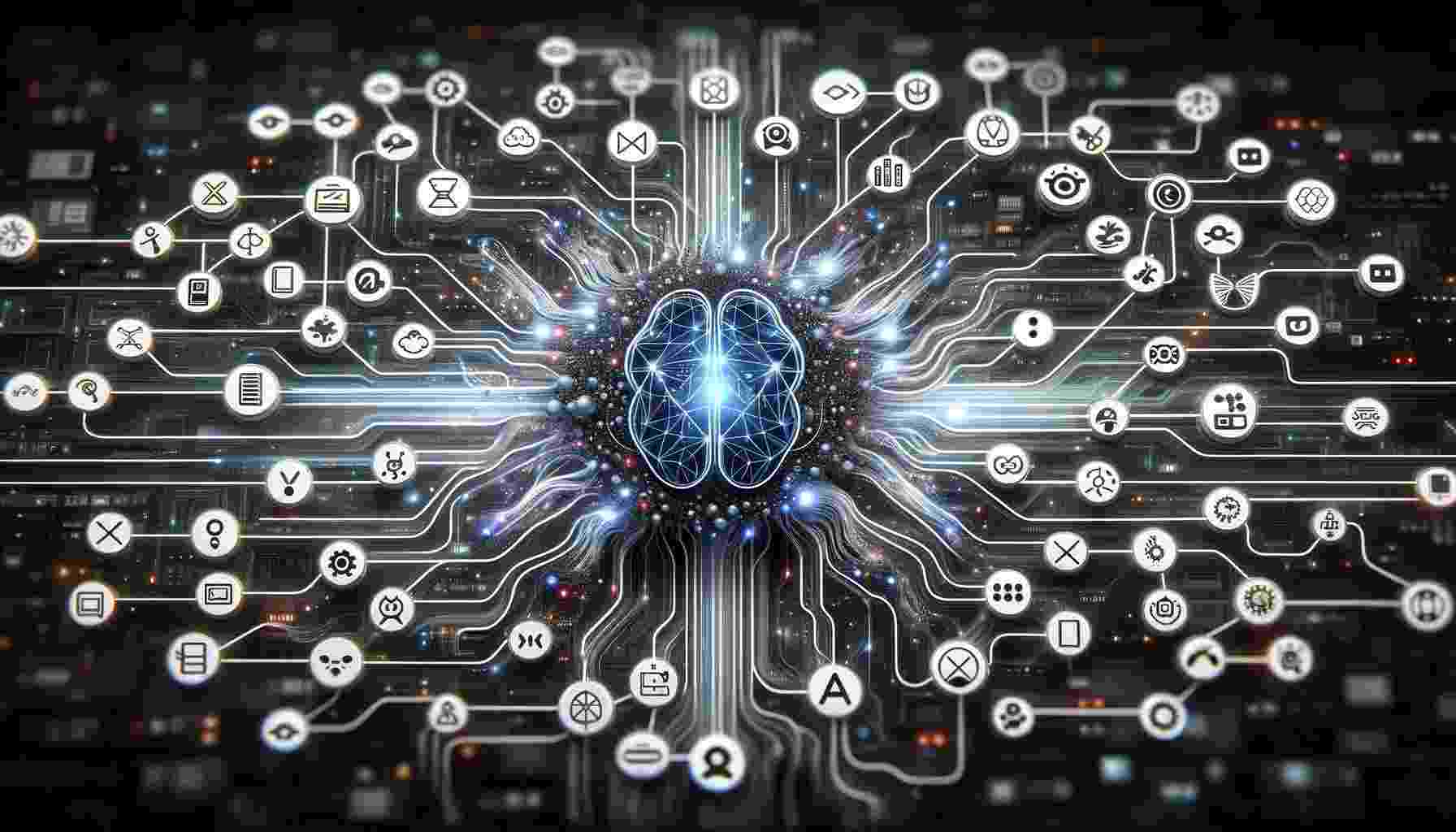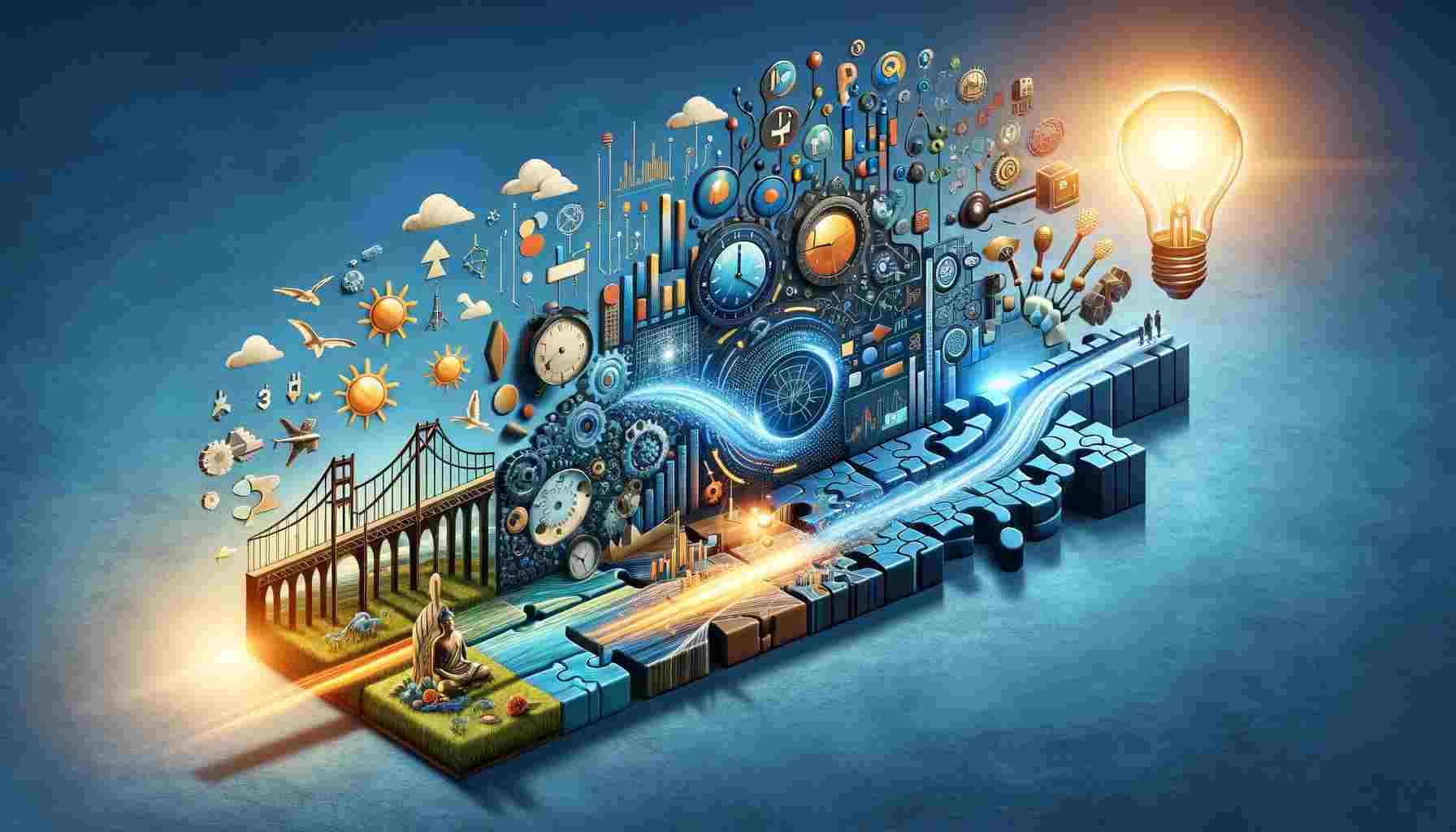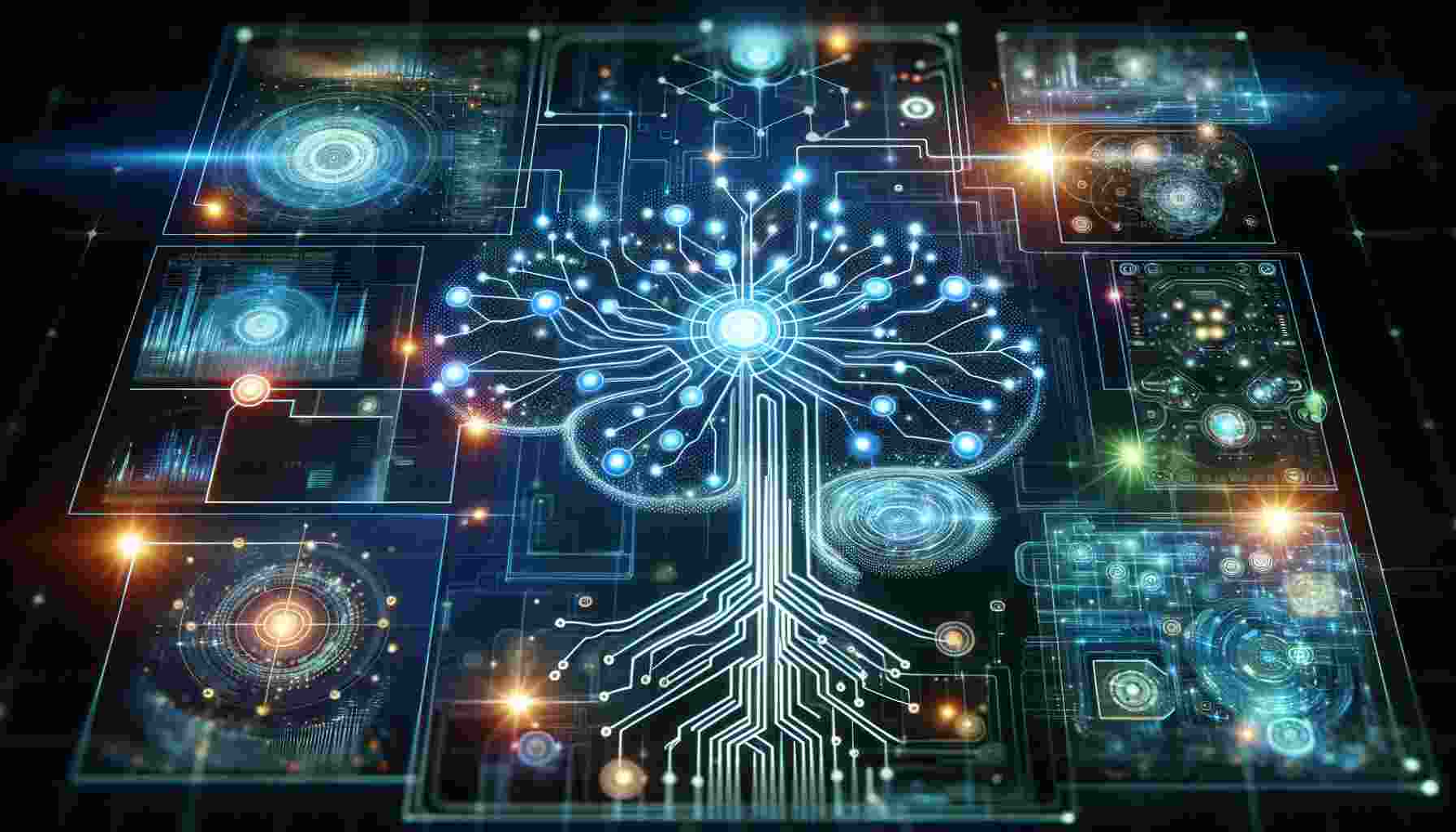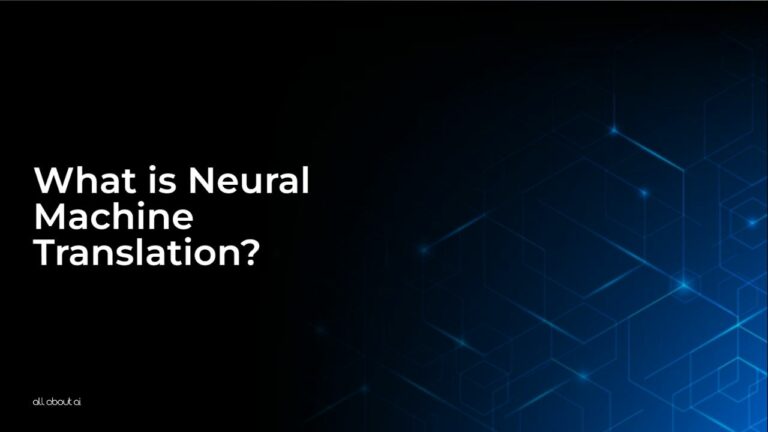Neural Machine Translation (NMT) is a groundbreaking approach in the field of artificial intelligence that leverages deep learning techniques to facilitate the translation of text between languages.
Unlike traditional rule-based or statistical translation models, NMT employs neural network models, offering a more fluent, accurate, and context-aware translation.
Looking to learn more about neural machine translation? Continue reading this article written by the AI enthusiasts at All About AI.
How Does Neural Machine Translation Work?
Neural Machine Translation (NMT) operates using deep learning algorithms, specifically neural networks, to translate text between languages.
These neural networks, resembling human brain functioning, analyze the entire context of a sentence rather than translating piece by piece.

How Is Neural Machine Translation Transforming Global Communication?
Neural Machine Translation (NMT) is transforming global communication in profound ways, reshaping how individuals and businesses interact across language barriers. Here are the key aspects of this transformation:
Breaking Down Language Barriers:
NMT is significantly reducing the language barriers that have historically hindered communication between different linguistic groups. By providing accurate and context-aware translations, it enables people from diverse linguistic backgrounds to interact and share information seamlessly.
Empowering Education and Research:
In educational and research contexts, NMT is a powerful tool for accessing a broader range of knowledge. Students and researchers can tap into materials and publications in various languages, broadening their scope of learning and investigation.
Innovations in Customer Support and Services:
NMT is revolutionizing customer support by enabling real-time translation in customer interactions. This not only improves the efficiency of support services but also enhances the customer experience by providing support in the customer’s native language.
Neural Machine Translation Applications:
NMT finds its applications in various sectors including business localization, customer support, content creation, and even in personal language learning tools.
Its ability to rapidly and accurately translate large volumes of text is particularly beneficial in international communication and e-commerce.
Business Localization:
NMT plays a crucial role in business localization, allowing companies to adapt their products, services, and marketing materials for different regions.
This includes not just translating text but also ensuring cultural appropriateness, which is vital for global market expansion and maintaining a brand’s integrity across different languages.
Customer Support:
In customer support, NMT facilitates real-time translation of queries and responses, enabling companies to offer support in multiple languages without the need for multilingual staff.
This enhances customer experience and broadens the reach of support services to a global audience.
E-Learning Platforms:
For e-learning platforms, NMT is instrumental in translating educational content, making knowledge accessible to a wider audience.
This includes not only textbooks and course materials but also interactive elements like quizzes and discussion forums, significantly enhancing the learning experience for non-native speakers.
Content Creation:
In content creation, NMT helps in translating articles, blogs, and news stories, allowing content creators to reach a broader audience.
This not only increases the visibility of their work but also fosters cultural exchange and understanding by sharing diverse perspectives across linguistic boundaries.
Speech Translation:
NMT is increasingly used in real-time speech translation, aiding in cross-linguistic communication in international conferences, diplomatic meetings, and even in personal interactions.
This application is particularly transformative as it bridges the spoken language divide in real-time scenarios.
What Are the Benefits of Neural Machine Translation?
The benefits of NMT are vast. It offers higher accuracy, context-aware translations, scalability for large projects, and time efficiency.
Additionally, continuous learning capabilities mean that NMT systems improve over time, learning from their translations and user feedback.

Improved Accuracy and Contextual Understanding:
NMT provides translations that are not only linguistically accurate but also contextually relevant, offering a deeper understanding of the original text. This is crucial in maintaining the essence and tone of the source material.
Scalability and Efficiency:
NMT systems can handle large volumes of text quickly, making them ideal for projects that require rapid translation. This scalability and efficiency are vital for businesses and organizations operating in multilingual environments.
Continuous Learning and Improvement:
Neural networks learn from each translation task, meaning NMT systems continuously improve over time. This self-learning capability ensures that the translations become more accurate and refined with use.
Cost-effectiveness:
While initial setup and training might be resource-intensive, NMT systems are cost-effective in the long run, especially for businesses requiring ongoing translation services. They reduce the need for human translators for routine translations, saving time and money.
Accessibility:
NMT enhances accessibility, breaking down language barriers in information dissemination. It plays a critical role in making content, whether educational, legal, or entertainment, accessible to a broader, global audience.
What Challenges Does Neural Machine Translation Face?
Despite its advantages, NMT faces challenges such as handling idiomatic expressions, maintaining privacy and security in translations, and the requirement of large datasets for training.
- Handling Idiomatic and Cultural Nuances: One of the significant challenges NMT faces is accurately translating idioms, colloquialisms, and cultural references. These elements often don’t have direct equivalents in other languages, making it difficult for algorithms to render them accurately.
- Data Privacy and Security: Ensuring the confidentiality and security of the data being translated is paramount, especially when dealing with sensitive information. NMT systems must be equipped with robust security measures to protect user data from breaches.
- Requirement of Large Datasets: NMT systems require extensive datasets to train effectively, which can be a limitation for languages with limited digital resources. This leads to disparities in translation quality between widely spoken and less common languages.
- Over-reliance on Automated Translations: There’s a risk of over-reliance on NMT, which might lead to the undervaluing of human expertise in translation. While NMT is efficient, it cannot yet fully replace the nuanced understanding and cultural sensitivity that human translators bring.
- Computational Resources: The computational power required for training and running NMT systems is significant. This not only involves financial costs but also raises concerns about the environmental impact of the high energy consumption associated with these computational needs.
Ethical Considerations in Neural Machine Translation:
Ethical considerations in NMT include ensuring unbiased translations, respecting cultural nuances, and maintaining the confidentiality of sensitive information. There’s also a need to address the potential displacement of human translators and the ethical use of data in training NMT systems.
Future Trends in Neural Machine Translation:

The future of NMT is promising, with advancements expected in areas like real-time translation, integration with voice recognition technology, and improved handling of low-resource languages.
Further development in AI and machine learning will continue to enhance the capabilities of NMT systems.
Integration with Augmented Reality (AR) and Virtual Reality (VR):
NMT is expected to integrate with AR and VR technologies, offering immersive language translation experiences in various applications, from tourism to education.
Improved Handling of Low-resource Languages:
Future advancements in NMT aim to better support low-resource languages, reducing the language digital divide and making technology more inclusive.
Real-time Speech Translation Enhancements:
Enhancements in real-time speech translation will facilitate smoother, more accurate cross-linguistic communication in various settings, including international diplomacy and business.
Personalized Translation Models:
NMT may evolve to offer personalized translation experiences, adapting to individual language usage patterns and preferences for more tailored outputs.
Integration with Voice Recognition and IoT Devices:
The integration of NMT with voice recognition technology and IoT devices is anticipated, expanding the scope of smart technology in multilingual communication and making everyday interactions more seamless.
Want to Read More? Explore These AI Glossaries!
Step into the world of artificial intelligence with our thoughtfully assembled glossaries. Whether you’re just starting out or an expert in the field, there’s always something intriguing to uncover!
- What Is Data Science?: In artificial intelligence (AI), Data Science is the field that uses algorithms, scientific methods, processes, as well as various systems to extract insights and knowledge from data – both structured and unstructured.
- What Is a Data Set?: In artificial intelligence, a data set refers to a structured or unstructured collection of data points, meticulously curated to enable AI systems to learn, make predictions, and gain valuable insights.
- What Is a Data Warehouse?: It is a centralized repository that stores and manages vast amounts of data collected from various sources.
- What Is a Decision Boundary?: In the context of artificial intelligence (AI), a decision boundary is a hypersurface that partitions the underlying feature space into two or more classes.
- What Is the Diffusion Model?: In artificial intelligence, the diffusion model refers to a machine learning framework that progressively transforms data from a simple, random distribution into a more complex one that represents the desired outcome.
FAQs
What is Neural Machine Translation used for?
What is Neural Machine Translation AI translation?
How does Neural Machine Translation work?
What are the functions of Neural Machine Translation?
Conclusion:
Neural Machine Translation stands at the forefront of AI’s contribution to global communication. By constantly evolving and adapting, it promises to bridge language gaps more effectively, fostering a more connected and understanding world.
This article was written to answer the question, “what is neural machine translation.” Now that you know more about this revolutionary technology in the world of artificial intelligence, read through the other articles in our AI definitions index to really expand your AI knowledge.





